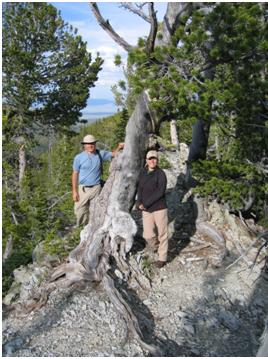Whitebark pine (Pinus albicaulis Engelm.) ecosystems have been shown to be highly sensitive to climate variability, with relatively small changes in temperature and precipitation causing significant effects on species productivity, community structure, and disturbance regimes. However, interactions between biotic and abiotic disturbance processes set in the context of changing environmental conditions may confound our ability to identify a pure climate signal in this complex ecosystem. Our understanding of how whitebark pine communities have been influenced both by changing climate conditions and disturbance is therefore critical for providing the ecological context of the growth declines observed in many whitebark pine communities today. In this study, we interpreted radial growth patterns of six whitebark pine chronologies to distinguish the relative influences of climate and mountain pine beetle activity on growth patterns exhibited by whitebark pine populations in western Montana. For more information about whitebark pine ecosystems: http://www.whitebarkfound.org/
Photos taken in the Beaverhead-Deerlodge National Forest in Montana. Dr. Evan Larson (University of Wisconsin-Plattville) and Dr. Saskia van de Gevel with an old-growth whitebark pine on top of Ajax Peak. Summer 2006.

